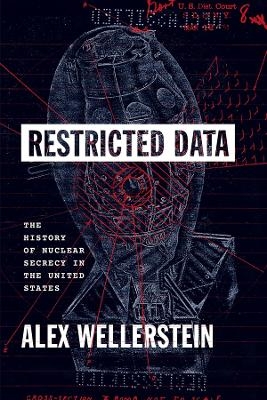
Restricted Data
University of Chicago Press (Verlag)
978-0-226-83344-6 (ISBN)
The American atomic bomb was born in secrecy. From the moment scientists first conceived of its possibility to the bombings of Hiroshima and Nagasaki and beyond, there were efforts to control the spread of nuclear information and the newly discovered scientific facts that made such powerful weapons possible. The totalizing scientific secrecy that the atomic bomb appeared to demand was new, unusual, and very nearly unprecedented. It was foreign to American science and American democracy—and potentially incompatible with both. From the beginning, this secrecy was controversial, and it was always contested. The atomic bomb was not merely the application of science to war, but the result of decades of investment in scientific education, infrastructure, and global collaboration. If secrecy became the norm, how would science survive?
Drawing on troves of declassified files, including records released by the government for the first time through the author’s efforts, Restricted Data traces the complex evolution of the US nuclear secrecy regime from the first whisper of the atomic bomb through the mounting tensions of the Cold War and into the early twenty-first century. A compelling history of powerful ideas at war, it tells a story that feels distinctly American: rich, sprawling, and built on the conflict between high-minded idealism and ugly, fearful power.
Alex Wellerstein is assistant professor of science and technology studies at the Stevens Institute of Technology in New Jersey. He is the creator of the online nuclear weapons simulator NUKEMAP.
Introduction: The terrible inhibition of the atom
Part I. The Birth of Nuclear Secrecy
1—The road to secrecy: Chain reactions, 1939–1942
2—The “best-kept secret of the war”: The Manhattan Project, 1942–1945
3—Preparing for “Publicity Day”: A wartime secret revealed, 1944–1945
Part II. The Cold War Nuclear Secrecy Regime
4—The struggle for postwar control, 1944–1947
5—“Information control” and the Atomic Energy Commission, 1947–1950
6—Peaceful atoms, dangerous scientists: The paradoxes of Cold War secrecy, 1950–1969
Part III. Challenges to Nuclear Secrecy
7—Unrestricted data: New challenges to the Cold War secrecy regime, 1964–1978
8—Secret seeking: Anti-secrecy at the end of the Cold War, 1978–1991
9—Nuclear secrecy and openness after the Cold War
Conclusion: The past and future of nuclear secrecy
Acknowledgments
Notes
Bibliography
Archival sources and abbreviations
Articles
Books and monographs
Index
| Erscheinungsdatum | 02.04.2024 |
|---|---|
| Zusatzinfo | 12 halftones, 7 line drawings, 3 tables |
| Sprache | englisch |
| Maße | 152 x 229 mm |
| Gewicht | 739 g |
| Themenwelt | Naturwissenschaften ► Physik / Astronomie ► Atom- / Kern- / Molekularphysik |
| Technik | |
| ISBN-10 | 0-226-83344-5 / 0226833445 |
| ISBN-13 | 978-0-226-83344-6 / 9780226833446 |
| Zustand | Neuware |
| Haben Sie eine Frage zum Produkt? |
aus dem Bereich


